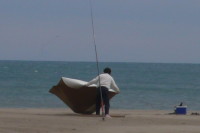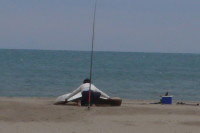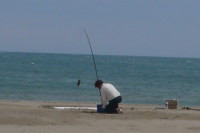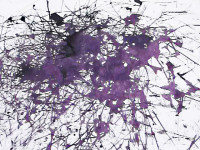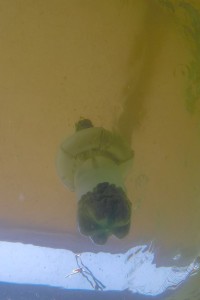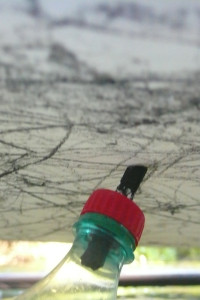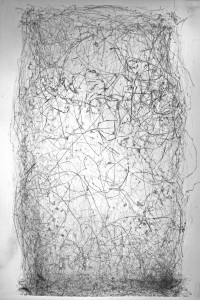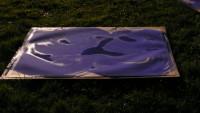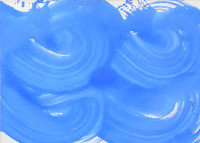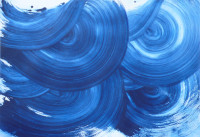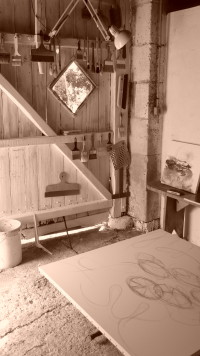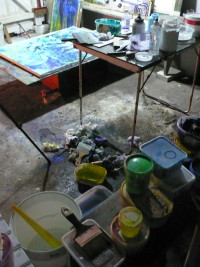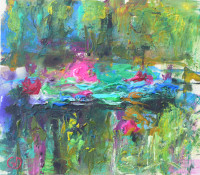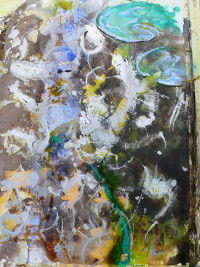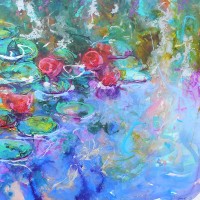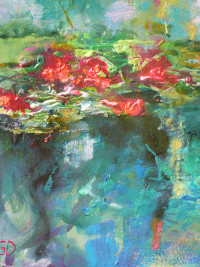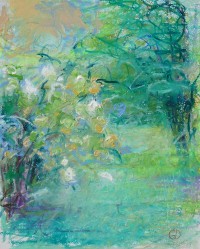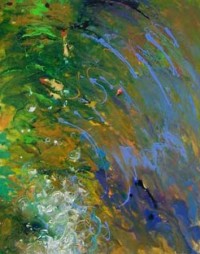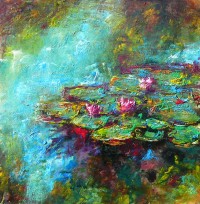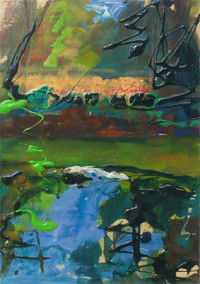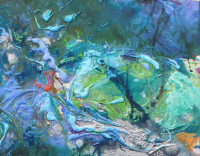Didier GRARE – An open window
«Never loose the feeling that touched you the first time » ¹
Camille Corot
Didier Grare is a reckless person, maybe even a little crazy! In the 21st century you may need to be reckless to have the audacity to confront the theme of water lilies in paint. Hasn’t everything been said on the subject by the master of Giverny … repeated over and over again, maybe even exhausted? Quite. Yet, when you discover Didier Grare’s water lily paintings you see candour and freshness, both sumptuous and generous. His style evokes the emotional language of the soul.
- 43° 01’ 36,4″ N ; 3° 04’ 04,1″ E (Port-la-Nouvelle – Occitanie)
- 43° 01’ 36,4″ N ; 3° 04’ 04,1″ E (Port-la-Nouvelle – Occitanie)
- 43° 01’ 36,4″ N ; 3° 04’ 04,1″ E (Port-la-Nouvelle – Occitanie)
- Écoulement 3h – 100 x 120
Let’s agree that there are two kinds of artist: those who, all their lives, flit from subject to subject, stopping here and there, driven by inexhaustible curiosity, with a ferocious appetite pushing them ever onward. And then there are the others, for whom an entire lifetime seems too short to study just one topic which, it turns out, is just a starting point of a never-ending journey. Didier Grare is the second kind of painter. This young Charentais painter conceives of painting as a serial activity, in which continuity goes hand in hand with constant renewal. Maybe he took up the water lily theme partly as a challenge, but also surely because it unites all the constituent elements of landscape painting: water, sky (or at least its reflection) and colour, as well as simple geometric repetition providing myriad possibilities for composition.
Didier Grare is a landscape artist: his tonal contrasts can be found in the shadows of foliage and the light of the undergrowth; the wind bending the grasses beats time with brush strokes on the canvas. And the acid yellow morning light devouring the shutters on the house, provides his contrast of values.
- Une nuit
- IKH
- Blue Parigi
Didier Grare seems always connected to that abstraction which we call nature. The painter from Nabinaud doesn’t just paint a representation of nature laid out in front of him, nor an expression of his feelings about nature. What he paints is different.
- Atelier
- Atelier
- Langlade 80×80
Didier Grare’s paintings describe the vital forces of nature. Thus there is a link, perhaps even a similar celebration in his paintings with those of Rebeyrolle or Pier Kirkeby, except that for Didier, the monumentality and the “furia” of Rebeyrolle and Kirkeby are replaced with an intimate delight in colour. For if there is one element that defines Dider Grare’s painting it is the way he uses colour. He doesn’t paint with colour, he draws with it.
- Autre Jour 76cm / 56 cm
- Levé de Lune 88cm / 88cm
- Jean Martin 80cm /80 cm (détail)
- Les boules de Neige 76cm / 56 cm
Any painter standing brush in hand in front of a blank canvas, must think of those who have preceded him, of the brush loaded with pigment crashing onto the canvas – a gesture repeated millions of times. Yet this gesture only has real meaning if the artist has found his voice and only if he speaks in his own voice. In this no man’s land, this constant vacillation, the stakes are high. “If I have seen further, it is because I stand on the shoulders of a giant” as Isaac Newton said…
- Deux gardons au pont des Vannes 100cm / 80cm
- Langlade 80×80
- Bord de Dronne 50cm / 70cm
- La mare « Detail »
Sketching rapidly in walnut tincture, on cardboard or on canvas, Didier Grare leaps into the void without a safety net: “Each painting is a bit like a boxing match”, he says. Writing about Bonnard, Dina Vierny said that rather than creating with colour, he invented colour. This phrase fits the owner of the studio at Nabinaud so well that it could be inscribed above the studio door. He paints with such honesty and generosity that his paintings take you straight into a third dimension. All painting contains the explanation of how it is created and Didier Grare’s painting is energetically, perhaps even thunderously explicit. He shows a deep thirst for freedom from the restrictions of the period when he learned traditional techniques, a time spent painting still lifes in the tradition of Flemish masters, a time when the treatise of Cennino Cennini was his bedtime reading.
Today, his painting is spontaneous because it is built on these solid foundations. Happily mixing techniques, loading his palette knife with unusual pigments like Scheveningen blue and Egyptian violet, Dider Grare displays a bold and determined physicality in his painting, going from instinct to trance and back again.
As for colour, Yves Bonnefoy wrote about Jacques Truphémus, who according to Balthus was one of the best French painters:
« Colour is often only one of the manifestations of a thing seen by the painter; the material comes first, since the perception of the red of a piece of fabric, let’s say or the blue ochre of some bark, is influenced by the weave of fabric or the grain of wood. Thus, colour is in osmosis with tactile impressions of nature or even more elementary, and it is from this evidence that the painter proceeds: one painter may explore the texture of shiny satin or ebony for the simple pleasure of indulging in an extreme sensation, another will nourish himself with the primal energy of the green or yellow of a sunflower. ³».
Didier performs a complete transformation of nature into colour: this primal energy is surely the original spring from which the artist drinks to restore his well of inspiration. Painting is a window onto nature that Didier Grare flings wide open. It is up to us to appreciate the vital beauty that he shows us.
¹.Camille Corot, Carnet 17, cité dans Camille Corot, Editions de l’Amateur, 1996, p. 44. (translated from French)
². Cité dans Bonnard, Musée d’Art Moderne de la Ville de Paris, 2006, p. 270.(translated from French)
³. Jacques Truphémus, Rh Editions, 2011, p. 11.(translated from French)
Original french text by Laurent Benoist
Editor – Pratiques des Arts
